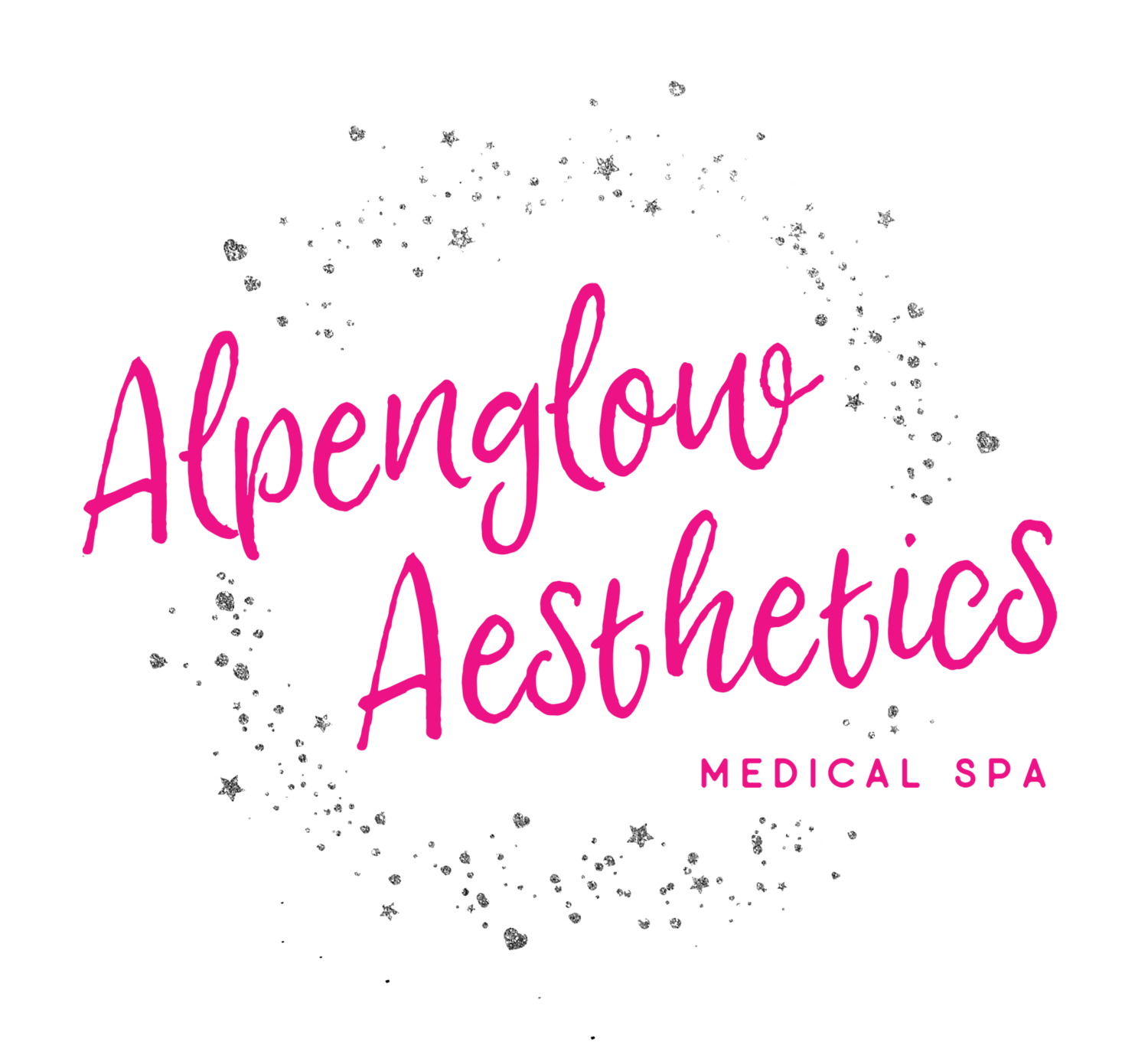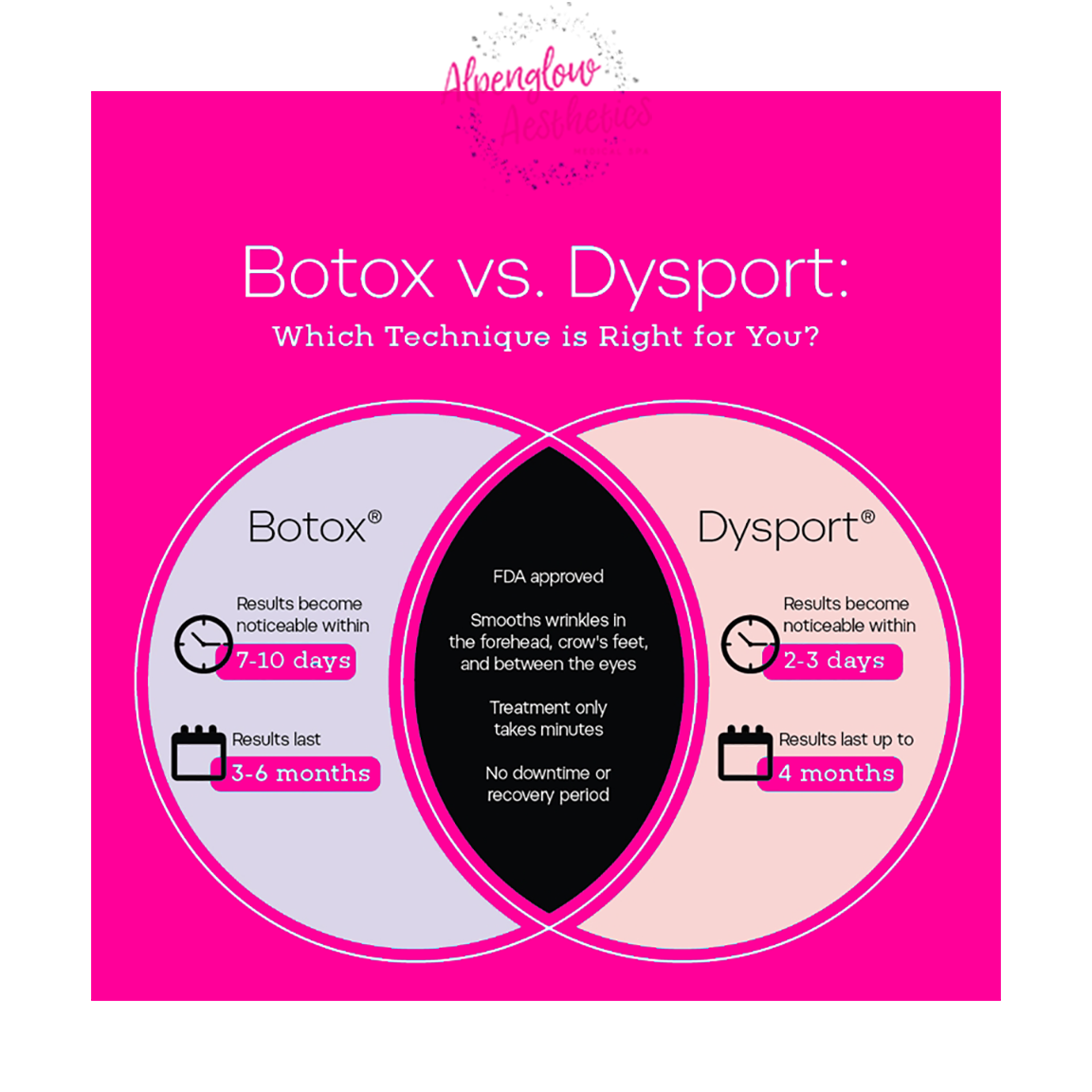Alpenglow Aesthetics Blog Post Botox® vs Dysport®
In 2002, Botox® Cosmetics was launched as the first FDA approved treatment for temporary improvement of frown lines. These lines are known as furrows which results from movement of the glabellar muscles between the eyes. Prior to cosmetic approval it had been used for many years as a treatment for severe spastic diseases and has a solid reputation. Botox® has continued to lead the aesthetic industry as the most recognizable name in cosmetic injectables.
Dysport® entered the rapidly growing injectable aesthetics market in 2009 capitalizing on the changing perception and mainstreaming of anti-aging treatments. It has quickly gained favor with injectors as well as consumers as a solid competitor to Botox®
These products are in a class known as neuromodulators. Neurotoxin is a term also used but feels harsh for most consumers. I like the sound of purified protein; it rolls off the tongue a little easier. They achieve the same end goal of weakening the muscle under the skin to produce a softer and brighter appearance. They are essentially sisters with slightly different personalities. Consumers may have brand loyalty to either company or have just had a better experience with one. I find Dyport® starts to work a little quicker and may produce a softer correction in my older population. On average both products will last 3-4 months. Placement of these products involve the use of a tiny needle with the same injection pattern. Bruising is the most common adverse event although can be minimized with proper technique. Pregnancy and lactation are contraindicated with all injectables. Risks and benefits of any treatment as well as costs and alternative options are best addressed in a thorough consultation with an experienced provider. Dosing has a direct impact on degree and duration of correction, so it is important not to under or over correct. On average treatment between the eyes will cost you between $200-$250. Both products have loyalty programs to help offset the price and encourage routine treatments. With regular use, maintenance treatments can be less product and therefore less expense.
Sara Torgerson APRN, FNP-C



